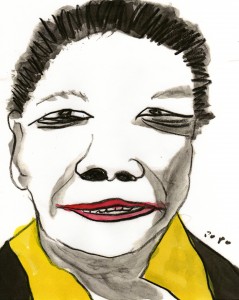The idea for this book was planted when I was just a child. My grandmother (we called her Popo) kept telling us, “You should be proud to be Hakka.” My brother and I resisted, refusing to speak Hakka even though we could understand most of what was being said. We were the odd balls in an all white conservative community in northern California. In fact, we were the first and only Chinese in town. In spite of our protests, Popo taught us Chinese lessons after our American classes. We learned to write Chinese calligraphy and read from picture books, but it didn’t stick.
It wasn’t until we grew up and left home did we realize what we missed. I greatly regret not being able to speak Hakka, even though I know few people who do. My career as a food writer and my family absorbed most of my time. It wasn’t until I left Sunset Magazine and had more time to pursue other interests that Popo’s words echoed in my ear. What did she mean? Why should I be proud to be Hakka? Now I had the time to find out.
I had more than three decades experience writing about food and developing recipes. I would explore my culture through what I knew best, food. In the digital age, I could search the web and find basic information on the Hakka. I was surprised how easy it was. Occasionally, before computers and google I would try to find information about the Hakka and found very little. I knew the Hakka were wanderers or nomads but never realized how scattered they were. They were pockets literally all over the world. Since I grew up knowing very few Chinese, let alone Hakka, I had assumed the Hakka were a small minority. Yet once I started my research I saw world population figures ranging from thirty to one hundred twenty million. A recent figure estimates 75 million Hakka live throughout the world. Also Hakka are not a minority, but Han, part of the Chinese majority.
I found reference books that enlightened me about who the Hakka were. The Hakka share a unique history and identity. The ancestors of the Hakka were displaced from their northern home around the fourth century and led a life as homeless migrants for centuries. Between the tenth to the fourteenth century, they lived in an isolated mountainous area in Fujian province where they solidified their language, culture, and identity. As they moved south they were treated as unwelcome lowly newcomers left with poor pieces of land. This forced the Hakka to grow strong in their ability to survive in any situation through hard work, adaptation, frugality, and tenacity. They gained a reputation as being pioneers, able to establish settlements where no one else could such as in Sarawak and Sabah in the Federation of Malaysian. Even in James Michener’s historical novel Hawaii, Dr. Whipple specifically requests Hakka laborers for his sugar plantations. When asked why, he replies “…Hakka can work…” Eventually these hardy pioneers settled throughout the world.
Hakkas are no longer just peasants. Many great political leaders were Hakka—China’s political reformer Deng Xiaoping, father of modern China Sun Yat-sen, Taiwan’s first elected president Lee Teng-hui, and Singapore’s first prime minister Lee Kuan Yew. Author Han Suyin ( Many-Splendoured Thing) and artist Lin Fengmian claim Hakka heritage. Famed couture shoe designer Jimmy Choo is a Hakka born in Malaysia. Actor and action film star Chow Yun-Fat who starred in Crouching Tiger, Hidden Dragon is a Hakka from Hong Kong. Successful Hakka restauranteur Alan Yau who created the original Michelin-starred Hakkasan in Britain was also born in Hong Kong.

